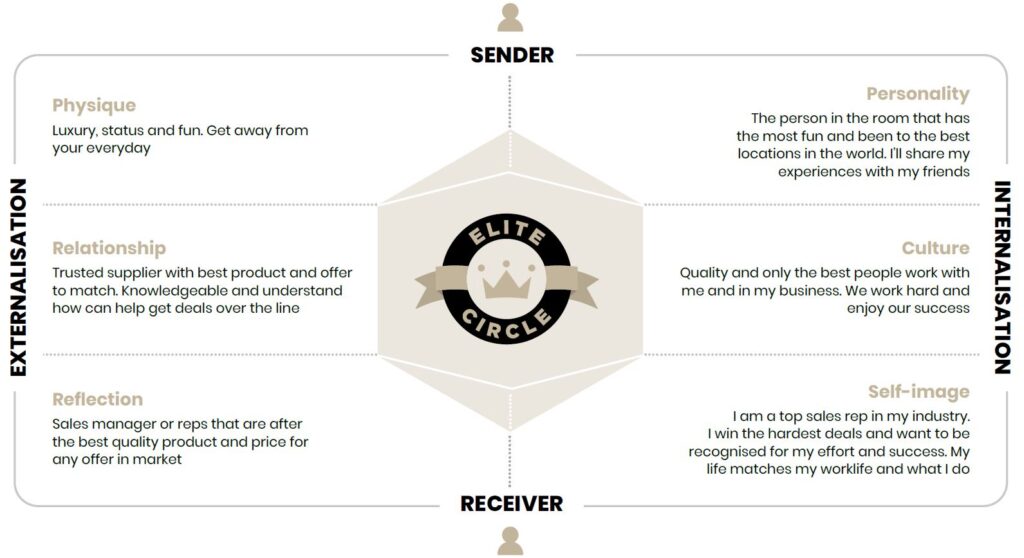
A B2B incentive program’s brand identity is central to its success. Creating a brand-centric incentive program ensures it resonates with customers, secures attention, and draws a targeted audience into the offer.
Program participant (or soon-to-be participant) numbers are maximised and are connected to the visual identity of your brand. From there, you as program manager can change the behaviour of a broader, deeper, and more engaged customer group.
A strong program identity provides program managers the flexibility to adapt strategy and reward offers without damaging customer goodwill in times of need, such as tougher economic periods or supply chain disruptions. It is during times like this that companies and their customers have used strong B2B incentive program branding to deliver relevant messaging, opportunities, and rewards.
Program participants must trust that the outcomes of any program change will hold true to the brand and the value they receive from it. But to accomplish this, creating a brand-centric incentive program instead of the reward (a common mistake) is crucial. It is, however, not created overnight and must be analysed and focused on at the earliest opportunity by program managers.
The following scenario is common, particularly in companies who organise travel incentives internally;
“We can’t take Bill and his wife to Brazil this year. How are we going to incentivise him, and more importantly, his wife, who together make all the buying decisions? Even more than that, how are we going to speak to him and make sure he maximises his share of wallet next year with us? I have convinced him every year when we are away on the annual trip – what am I going to do this year to make sure they remain loyal to us?”
The conversations our clients are having are different because we have ensured they have focused on the brand, not the destination. By ensuring that you build a brand and a community that customers, channels, or sales teams can identify with, you avoid the pitfalls of focusing in on destination, which has locked many businesses in a position that they are finding very hard to move forward from.
212F client participants return from incentive trips and say “Wow, the [BRAND NAME] trip was unforgettable’. Businesses focusing on the destination and not the brand hear “I went to Queenstown and it was great” from their participants.
One statement merely states a holiday destination, while the other is actively promoting a program brand and subtly encouraging others to take a closer look.
It is the same with any reward – having a robust program brand means your program participants engage with you, not the reward.
To design a stronger B2B reward and incentive program brand, we recommend using the Kapferer Brand Identity Prism as part of the onboarding and design phase. This method distills what your brand means and how those attributes carry across into a program identity, while also creating a stronger proposition for the program.
To demonstrate the Brand Identity Prism, we’ve created a sample for a fictitious incentive program brand Elite Circle, below. The industry segment is IT, with a traditional B2B sales channel as the route to market.
At the centre of this lies your company and program logos. In the left-hand column are external-facing elements around how you want a customer to see your program, who they are, what relationship you have with them, what you want them to see, and their association with your brand.

The right-hand column represents the internal planning and helps identify how you picture your program’s brand identity. This includes your brand’s personality, which guides you on how to express your content, language, and culture. By doing this exercise, you keep the elements of your incentive program, such as rewards and communications, consistent with your brand and image. Clarifying and understanding self-image sets the framework for ongoing emotional connection and status with the program.
Coming back to travel, several industries across Australia and New Zealand led with destination as the incentive offer, rather than brand over the past few years. They now find themselves in a position where communicating the value of their programs is difficult.
With a solid brand identity and proposition, these industries and companies could have addressed these challenges with the following:

• Emotional Connection – over time, customers build an emotional connection with a program brand. People with strong loyalty are more forgiving if & when their expectations are not met
• Messaging – rather than a focus on just the rewards, you’re able to promote other program benefits.
• Brand Promise – a customer knows the quality of the program, what to expect from it, and implicitly trusts it
• Budget Creep – there’s no need to try to outdo the last program, or your competitors’ program, with the same budget,
• Budgets Cuts – there’s more flexibility to change the program reward offer when economic challenges arise, as the program has a “safety net” which is there as a result of this focus on brand building

It takes time to build the value proposition of a program. However, by putting the spotlight on your brand, you change the conversation with your customer. Over time, they see your brand as a partnership, not an expectation. This gives you the flexibility to change propositions and rewards. Recent events have shown this to be extremely relevant and valuable.
Understanding your brand and developing a clear program identity makes it easy to relate and talk to your participants. It sets a clear direction for communication and connects with people who become your strongest advocates.
Few businesses would create a logo or business name based on a single product, as it would restrict plans for new products or services. The same concept applies to the brand of your incentive program. Instead of leading with the reward and locking yourself in, build a strong program brand and lead with a strategy to maximise its potential.
